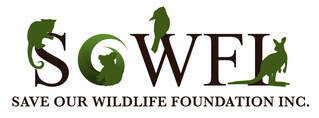|
Joey viability: 55 grams, furred with eyes open, must be uninjured and warm on arrival
Adult weight: 700-1000 grams Tail: Normally have a white tip 1/3 length of tail Nose: Normally black or brown Ears: Small and rounded Number of young: Two or three young Diet: Native foliage/leaves and native flowers ONLY - no fruit |
|
Joey viability: 28 grams, pink with eyes closed, must be uninjured and warm on arrival
Adult weight: 1500-4000 grams Tail: Black tail Nose: Normally pink Ears: Large pointed ears Number of young: One young, twins are rare Diet: Native foliage/leaves and native flowers - 5% body-weight supplement of fruit & veg |

